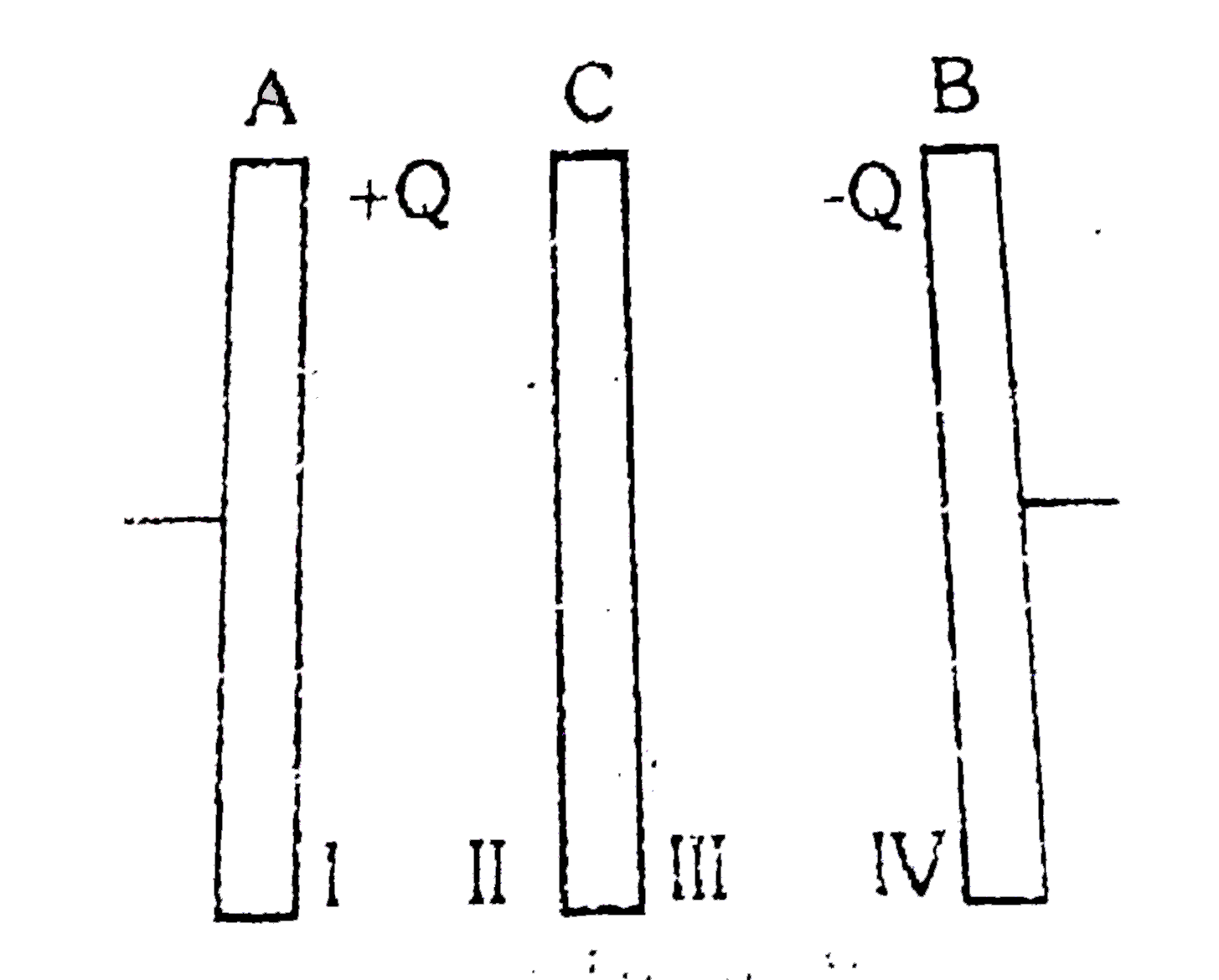A parallel-plate capacitor is connected to a cell. Its positive plate A and its negative plate B have charges +Q and −Q respectively. A third plate C, identical to A and B, with charge +Q, is now introduced midway between A and B, parallel to them. Which of the following are correct?
The charge on the inner face of B is now −3Q2.
There is no charge in the pontential difference between A and B.
The potential difference between A and C is one-third of
The charge on the inner face of A is not Q/2.
The correct Answer is:A, B, C, D
Step by step video, text & image solution for A parallel-plate capacitor is connected to a cell. Its positive plate A and its negative plate B have charges +Q and -Q respectively. A third plate C, identical to A and B, with charge +Q, is now introduced midway between A and B, parallel to them. Which of the following are correct? by Physics experts to help you in doubts & scoring excellent marks in Class 12 exams.
Topper's Solved these Questions
Similar Questions
A parallel plate capacitor having area A is given a charge +q and −q on its plates, Two plates exert force of attraction given by.........
View SolutionA parallel plate capacitor having plate area A and separation between the plates d is charged to potential V.The energy stored in capacitor is ....???
View Solution
Knowledge Check
- Question 1 - Select One
Plates a and B constitutes an isolated, charge parallel plate capacitor. The inner surface (I and IV) of A and B have charge +Q and -Q respectively. A third plate C with charge +Q is now introduced midways between A and B. Which of the following statement is not correct?
 AThe surface I and II will have equal and opposite chargesBThe surfaces III and IV will have equal and opposite chargesCThe charge on surface III will be greater than QDThe potential difference between A and C will be equal to the potential difference between C and B
AThe surface I and II will have equal and opposite chargesBThe surfaces III and IV will have equal and opposite chargesCThe charge on surface III will be greater than QDThe potential difference between A and C will be equal to the potential difference between C and B - Question 2 - Select One
A parallel plate capacitor C has a charge Q. The actual charges on its plates are
AQ,QBQ/2, Q/2CQ,-QDQ/2. - Q/2 - Question 3 - Select One or More
A parallel plate capacitor is charged from a cell and then isolated from it. The separation between the plates is now increased
AThe force of attraction between the plates will decreaseBThe field in the region between the plates will not changeCThe energy stored in the capacitor will increaseDThe potential difference between the plates will decrease
A parallel-plate capacitor is charged from a cell and then disconnected from the cell. The separation between the plates is now double.
View SolutionWhen a dielectric is introduced between the plates of a charged parallel plate capacitor, whichi one of the following will not change?
View SolutionIn a parallel plate capacitor with plate area A and charge Q, the force on one plate because of the charge on the other is equal to
View SolutionA parallel plate capacitor is charged from a cell and then isolated from it. The separation between the plates is now increased
View SolutionAn isolated parallel-plate capacitor of capacitor C has paltes X and Y. If plate X is given charge Q, the potential difference between X and Y Is
View Solution

